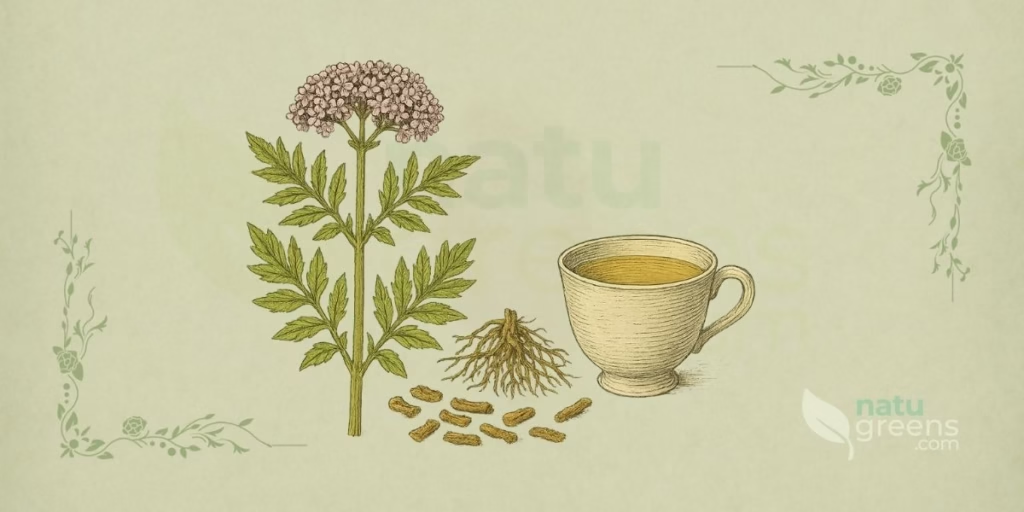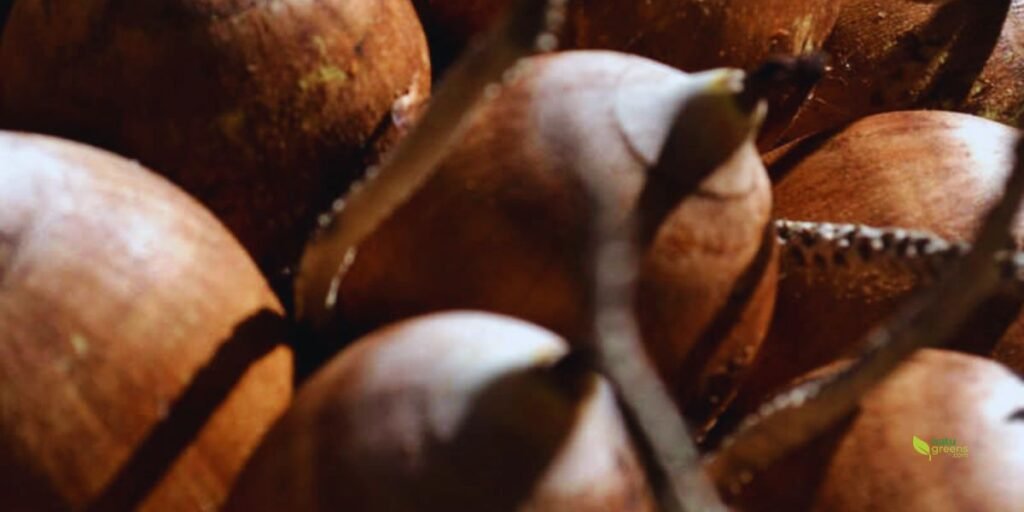Trigonella foenum-graecum L. / Fenugreek, also known as fenugreek, is an annual herbaceous plant from the Fabaceae family, native to India and North Africa. Cultivated for millennia, its seeds and leaves are valued in both culinary and traditional medicine. Fenugreek is recognized for its characteristic aroma and bitter taste, similar to maple syrup.
Historically, it has been employed in various cultures as a tonic, laxative, and lactation stimulant. Modern research has focused on its hypoglycemic, hypolipidemic, and anti-inflammatory properties, attributed to its rich phytochemical composition. Fenugreek is a notable example of a medicinal plant with vast therapeutic potential, being the subject of numerous scientific studies.
Popular and International Names of Trigonella foenum-graecum
- English: fenugreek, bird’s foot, Greek hayseed.
- French: fenugrec.
- German: Bockshornklee.
- Italian: fieno greco.
- Portuguese: feno-grego, fenacho, alforva (PT); feno-grego (BR).
- Spanish: fenogreco, alholva.
Botanical Synonyms of Trigonella foenum-graecum
The accepted scientific name for this species is Trigonella foenum-graecum L. Although the reference article does not mention specific botanical synonyms, it is common for plants with a long history of use to present variations in their nomenclature over time. However, for purposes of clarity and standardization, Trigonella foenum-graecum L. is the preferred designation in current scientific literature.
Botanical Family: Fabaceae
Trigonella foenum-graecum belongs to the Fabaceae family, also known as Leguminosae. This is one of the largest families of flowering plants, encompassing a vast diversity of tree, shrub, and herbaceous species. Fabaceae are characterized by their ability to fix nitrogen in the soil through symbiosis with bacteria in their roots, making them important for soil fertility. Many members of this family are cultivated for their fruits (legumes), seeds (beans, lentils), and forage. Besides fenugreek, the family includes plants such as beans, peas, peanuts, and soybeans, many of which have significant nutritional and medicinal value.

Botanical illustration of Trigonella foenum-graecum L. (fenugreek, bird’s foot, Greek hayseed), an annual herbaceous plant of the Fabaceae family, showing a slender taproot with fine lateral roots, an erect or semi-erect branching stem with trifoliate leaves, each leaflet obovate to oblong, serrated at the apex, small yellowish-white flowers in axillary clusters, and long, slender, sickle-shaped pods containing small, rhomboidal, brownish-yellow seeds, in 19th-century botanical encyclopedia style on aged herbarium paper background with a subtle sage-green tone.
Parts Used of Trigonella foenum-graecum
- Leaves: Consumed as vegetables in some cultures and also possess medicinal properties.
- Seeds: The most used part, both in culinary and medicine, due to their high concentration of bioactive compounds.
- Stem: Although less common, the stem is also reported as having medicinal uses in some traditions.
Ethnobotanical and Traditional Uses of Trigonella foenum-graecum
- Aid in childbirth
- Digestive disorders (loss of appetite, gastritis, constipation)
- Kidney stones
- Lactation stimulant (galactagogue)
- Menstrual cramps and menopausal symptoms
- Tonic and demulcent
Therapeutic Properties of Trigonella foenum-graecum
- Analgesic
- Anticancer
- Anti-inflammatory
- Antimicrobial
- Antiparasitic
- Antioxidant
- Hepatoprotective
- Hypocholesterolemic
- Hypoglycemic
- Hypolipidemic
- Immunomodulatory
- Neuroprotective
Detailed Phytochemical Profile of Trigonella foenum-graecum
Fenugreek is rich in a variety of phytochemicals that contribute to its therapeutic properties. Saponins are the most concentrated compounds, including diosgenin, yamogenin, tigogenin, neotigogenin, gracunins, and fenugreekine. These steroidal saponins are hormone precursors and play a crucial role in the plant’s hypocholesterolemic and antidiabetic effects.
Alkaloids are also abundant, with trigonelline being the main one (about 35% of total alkaloids). Other alkaloids include choline, gentianine, and carpaine. Trigonelline, a nicotinic acid derivative, is known for its hypoglycemic and neuroprotective effects.
The plant contains various flavonoids, such as apigenin, luteolin, quercetin, vitexin, isovitexin, and orientin, which contribute to its antioxidant and anti-inflammatory activity. Fibers, mainly galactomannans (mucilaginous fiber), represent 45-60% of carbohydrates and are responsible for many of the digestive and hypoglycemic effects.
Fenugreek is a good source of proteins (20-30%), rich in essential amino acids such as tryptophan and lysine, and contains free amino acids like 4-hydroxyisoleucine, arginine, and histidine. Fixed oils (5-10%) are rich in unsaturated fatty acids, such as linoleic, linolenic, and oleic. Essential oils (>5%) include neryl acetate, camphor, β-pinene, and β-caryophyllene.
In terms of vitamins and minerals, the seeds and leaves are rich in vitamins A, B (thiamine, riboflavin, niacin), C, and nicotinic acid. It is an excellent source of iron (33 mg/100g in seeds), in addition to calcium and phosphorus.
Preparation and Administration Forms of Trigonella foenum-graecum
- Capsules (standardized extract)
- Powder (ground seeds, for culinary and supplemental use)
- Tea (seed infusion)
- Tincture
Synergy with Other Medicinal Plants
Trigonella foenum-graecum + Cinnamomum verum (Cinnamon)
The combination of fenugreek with cinnamon can enhance hypoglycemic effects in individuals with type 2 diabetes. Both extracts work to improve insulin sensitivity and reduce blood glucose levels, offering a complementary approach to glycemic control.
Trigonella foenum-graecum + Silybum marianum (Milk Thistle)
For liver support, the synergy between fenugreek and milk thistle is promising. While fenugreek has hepatoprotective properties and can aid in detoxification, milk thistle (silymarin) is a known liver protector, acting in liver cell regeneration and protection against toxins.
Trigonella foenum-graecum + Zingiber officinale (Ginger)
The combination with ginger can amplify the anti-inflammatory and digestive properties of fenugreek. Both are recognized for relieving gastrointestinal disorders and reducing inflammation, being useful in cases of dyspepsia, nausea, and joint pain.
Recipes and Usage Protocols of Trigonella foenum-graecum

Botanical illustration in 19th-century style showing Trigonella foenum-graecum (fenugreek) tea preparation scene, featuring a delicate porcelain teacup with amber-colored fenugreek tea, surrounded by dried fenugreek seeds, a few dried fenugreek leaves, a slice of lemon, and a small wooden spoon with a drizzle of honey, all arranged harmoniously on aged herbarium paper background.
Fenugreek Tea for Glycemic Control
Ingredients: 1 teaspoon of fenugreek seeds, 250 ml of water.
Preparation method: Soak the seeds in water overnight. The next morning, boil the water with the seeds for 5-10 minutes. Strain and drink warm.
Dosage: 1 cup, 1-2 times daily, before main meals.
Indications: Aid in controlling blood sugar levels in cases of type 2 diabetes (with medical supervision).
Infusion to Stimulate Lactation
Ingredients: 1-2 teaspoons of crushed fenugreek seeds, 250 ml of boiling water.
Preparation method: Pour boiling water over the crushed seeds. Cover for 10-15 minutes. Strain and drink.
Dosage: 1 cup, 3 times daily. Increased milk production is usually noticed within 24-72 hours.
Indications: Increased breast milk production in lactating women (under professional guidance).
Fenugreek Paste for Hair and Skin
Ingredients: 2 tablespoons of fenugreek seeds, water as needed.
Preparation method: Soak the seeds in water overnight. The next day, grind the seeds with a little water until forming a homogeneous paste.
Dosage: Apply to the scalp to strengthen follicles or to the skin to reduce inflammation. Leave on for 30 minutes and rinse.
Indications: Hair loss, dandruff, acne, skin inflammation.
Associated Alternative Therapies
Ayurveda
In Ayurvedic medicine, fenugreek (methi) is valued for balancing Vata and Kapha, but may increase Pitta. It is considered a digestive tonic, carminative, and galactagogue. Used to treat digestive disorders, diabetes, arthritis, and to promote lactation. The seeds are often roasted and ground for use in powders and spice mixtures.
Chinese Herbal Medicine
In traditional Chinese medicine, fenugreek (hu lu ba) is classified as an herb that warms the kidney and disperses cold. It is used to treat kidney Yang deficiencies, manifested by lower back pain, impotence, frequent urination, and hernia. It is also employed to relieve pain and reduce swelling. Considered to have a warm nature and bitter taste.
Western Herbal Medicine
In contemporary Western herbal medicine, fenugreek is widely recognized for its hypoglycemic and hypocholesterolemic properties. Standardized extracts are used as supplements for type 2 diabetes control and cholesterol reduction. It is also valued as a galactagogue and to relieve menopausal symptoms and dysmenorrhea. Its richness in mucilaginous fibers gives it demulcent and laxative properties.
Contraindications and Side Effects of Trigonella foenum-graecum
General Contraindications
Fenugreek is not recommended for use in large quantities during pregnancy, as it may stimulate uterine contractions and induce labor. Individuals with allergies to peanuts, chickpeas, or other legumes should exercise caution, as they may experience allergic reactions to fenugreek.
Special Precautions
Children should not consume fenugreek supplements due to lack of safety studies and potential for adverse effects. Patients with hormone-sensitive conditions, such as breast or prostate cancer, should consult a doctor before use, due to the presence of phytoestrogens.
Drug Interactions
Fenugreek may interact with anticoagulant medications (such as warfarin) and antiplatelets (such as aspirin), increasing the risk of bleeding due to its anticoagulant properties. Diabetic patients using hypoglycemic medications (insulin, metformin) should closely monitor blood glucose, as fenugreek may potentiate the effect of these drugs, leading to hypoglycemia.
Side Effects
In high doses, fenugreek may cause gastrointestinal disturbances such as diarrhea, nausea, and flatulence. A common side effect is a body and urinary odor similar to maple syrup, due to the presence of sotolon. In rare cases, liver toxicity may occur with excessive supplement use.
Frequently Asked Questions about Trigonella foenum-graecum
Does fenugreek help with weight loss?
Yes, fenugreek can aid in weight loss. Its high fiber concentration, especially galactomannans, promotes satiety and reduces appetite, which can lead to lower caloric intake. Additionally, studies suggest it may improve glucose and lipid metabolism, contributing to body weight management.
Is it safe to use fenugreek during breastfeeding?
Fenugreek is widely used as a galactagogue to increase breast milk production. In moderate doses, it is generally considered safe for lactating women. However, it is crucial to consult a healthcare professional before starting any supplementation, especially if there are pre-existing medical conditions or use of other medications.
What is the difference between fenugreek and other legumes?
Although fenugreek belongs to the legume family (Fabaceae), it is distinguished by its unique phytochemical profile, especially the high concentration of steroidal saponins and trigonelline. These substances confer specific medicinal properties, such as hypoglycemic and galactagogue effects, which are not as prominent in other common legumes.
Can fenugreek affect hormone levels?
Yes, fenugreek contains phytoestrogens, which are plant compounds with a structure similar to human estrogens. These can have an impact on hormone levels, which explains its traditional use for menopausal symptoms and lactation stimulation. For this reason, it is important to use it with caution and under medical supervision, especially in cases of hormonal imbalances or hormone-sensitive conditions.
How does fenugreek interact with diabetes medications?
Fenugreek has significant hypoglycemic properties, which means it can reduce blood sugar levels. When used in conjunction with diabetes medications, such as insulin or metformin, it may potentiate the effect of these drugs, leading to an excessive drop in blood glucose (hypoglycemia). Therefore, it is essential that diabetic patients consult their doctor before using fenugreek and closely monitor their glucose levels.
References and Scientific Studies
- Visuvanathan, T., et al. (2022). Revisiting Trigonella foenum-graecum L.: Pharmacology and Therapeutic Potentialities. Plants (Basel), 11(11), 1450.
- Wani, S. A., & Kumar, P. (2018). Fenugreek: A review on its nutraceutical properties and utilization in various food products. Journal of the Saudi Society of Agricultural Sciences, 17(2), 97-106.
- Srinivasan, K. (2006). Fenugreek (Trigonella foenum-graecum): A review of health beneficial physiological effects. Food Reviews International, 22(2), 203-224.
- Albaker, W. I. (2023). Fenugreek and Its Effects on Muscle Performance: A Systematic Review. Journal of Functional Morphology and Kinesiology, 8(3), 427.
- NCCIH (National Center for Complementary and Integrative Health). Fenugreek.
- Sharma, R. D., Raghuram, T. C., & Rao, N. S. (1990). Effect of fenugreek seeds on blood glucose and serum lipids in type I diabetes. European Journal of Clinical Nutrition, 44(4), 301-306.
- Petit, P., et al. (1993). Effects of fenugreek seeds on the blood glucose and insulin responses in normal and diabetic dogs. European Journal of Clinical Nutrition, 47(1), 59-64.
- Sauvaire, Y., et al. (1991). Isolation and identification of 4-hydroxyisoleucine from fenugreek seeds. Phytochemistry, 30(4), 1335-1338.
- Ribes, G., et al. (1984). Effects of fenugreek seeds on endocrine pancreatic secretions in dogs. Annals of Nutrition and Metabolism, 28(1), 37-43.
- Broca, C., et al. (1999). 4-Hydroxyisoleucine: a novel amino acid potentiator of insulin secretion. American Journal of Physiology-Endocrinology and Metabolism, 277(4), E617-E623.
- Joglekar M., Mandal M., Murthy S. (2012). Comparative analysis of antioxidant and antibacterial properties of Aegle marmelos, Coriandrum sativum and Trigonella foenum graecum. Acta Biol. Indica., 1, 105–108.
- Tewari D., et al. (2020). Fenugreek (Trigonella foenum-graceum L.) Seeds Dietary Supplementation Regulates Liver Antioxidant Defense Systems in Aging Mice. Nutrition, 12, 2552.
- Younesy S., et al. (2014). Effects of Fenugreek Seed on the Severity and Systemic Symptoms of Dysmenorrhea. J. Reprod. Infertil., 15, 41–48.
- Khalil W., Roshdy H., Kassem S. (2016). The potential therapeutic role of Fenugreek saponin against Alzheimers disease: Evaluation of apoptotic and acetylcholinesterase inhibitory activities. J. Appl. Pharm. Sci., 6, 166–173.






